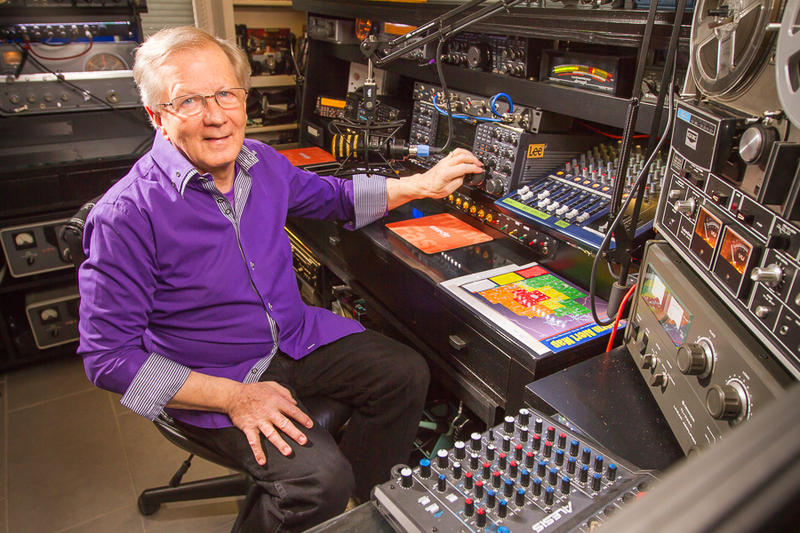
Tribute to Robert G. Heil -
K9EID
October 5, 1940 - February 28, 2024

K9EID, Robert G. "Bob" Heil, passed away on February 28 after a one-year fight with cancer. Heil was an accomplished theater organ musician as a teenager. In his mid to late teens and early college years, became a theater organ designer and tuner while continuing to perform professionally. After college, Heil began a career as a professional audio engineer, designing sound systems for some of the world's most iconic rock and roll performers and groups, including WB6ACU, Joe Walsh; Peter Frampton, The Grateful Dead, and The Who. Among his technological innovations are the Heil Talk Box, the Mavis, and a quadraphonic sound mixer. W3MMM, Jay Horman, wrote on Facebook, "It was fun to spend time at the kiosk showcasing his work at the Rock and Roll Hall of Fame [in Cleveland, Ohio]." A ham since age 13 and an early moonbounce innovator, Heil decided in the 1980s to devote full time to designing and selling amateur radio products - microphones, headsets, equalizers, and other station accessories. His headsets are ubiquitous in DX and contest station the world over. He later returned to professional audio, designing home theater systems and studio-grade microphones and other audio equipment. He won numerous amateur radio and industry awards, as well as an honorary doctorate in music and technology from the University of Missouri. Read Heil's obituary and the ARRL appreciation.
It was a pleasure to know Bob. We would talk at the Dayton Hamvention. In 2013, Bob came to my area to see the amazing K3LR station. Tim got me and others together to go to lunch with Bob. We had a very good conversation. Bob talked about going on tour with The WHO, making the "Talk Box" used by Joe Walsh and Peter Frampton. Bob told about going to England to visit Roger Daltry and Pete Townsend before they went on their latest tour. I could listen to Bob for hours. He told me how he loved the smell of solder and how he loved homebrewing. His audio equipment, headphones, and microphones are the best on the market. Can you tell me one ham that doesn't have at least one of Bob's microphones or headsets, I can't. Bob was a very friendly guy and will be greatly missed. RIP my friend. K8CX
I had the pleasure of meeting K9EID, Bob Heil, at the Pacific North West DX Convention several years ago. The photo below is of K9JF, Jim Fenstermaker (L) and K9EID, Bob Heil (R), at Jim’s dream QTH which looks over the Columbia Gorge. RIP Bob. K9JF

K9JF, K9EID
The following text was posted on the Heil
Communications Facebook Page.
"Today we say goodbye to our beloved founder, Dr. Bob Heil.
Bob fought a valiant, year-long battle with cancer, and passed
peacefully surrounded by his family. Bob’s impact on
professional and live sound cannot be overstated. Driven by a
lifelong passion for sound, Bob’s pioneering work
revolutionized how concert goers experienced live sound. Bob
created and developed numerous pro sound innovations and products
over the years, some of which are preserved in the Rock and Roll
Hall of Fame Museum. In 2007, Bob was the recipient of the Audio
Innovator Parnelli Award, recognizing his outstanding influence
on the live sound industry. Countless artists, creators,
broadcasters, podcasters, sound engineers, and sound
professionals worldwide continue to be impacted by Bob’s
work. While Bob’s presence will dearly be missed, we are
immensely proud and happy to honor and carry on his legacy.”
Tnx W3UR
Our beloved founder, Dr. Bob Heil, K9EID, is now a Silent Key. Bob fought a valiant, year-long battle with cancer, and passed peacefully surrounded by his family. Bob’s lifelong passion for amateur radio was clear to everyone involved in the hobby. Everything Bob did for the betterment and growth of amateur radio - from his instructional handbooks and countless presentations to his support of the ARRL and youth programs - was based on the foundation and spirit of service. Bob was an Elmer to all of us. While Bob’s presence will dearly be missed, his impact on the hobby and everyone in it will forever be felt. On behalf of Bob to all ham radio operators worldwide, 73. Tnx KB8NW
Taken from Bob's QRZ.com page!
First licensed in 1956, Amateur Radio has been the foundation of my careers in the sound reinforcement industry as well as bringing high quality, articulate audio to Amateur Radio. Entering this great hobby during the best sun spot cycle helped me to focus on designing and building one of the first VHF SSB KW stations. Throughout the years, I have enjoyed designing many antennas, from the 128 element two meter ''J' Beam array in 1960 to the latest - phased arrays on 40 and 75 meters. I enjoy all of the bands from 160 meters through two meters working my many friends and especially newcomers to this great hobby.
I was fortunate to have a great mentor, Larry K0DGE, Chief Engineer at KMOX-CBS radio in St. Louis who taught me how to build starting with several small 6 meter transmitters (see one beside the Harvey Wells), converters, antennas followed by building a Wes Schum Central Electronics 10B and then a 20A kit with home brew 6 and 2 meter transverters driving a Johnson 6N2 Thunderbolt built from their kit. This was one of the very first VHF SSB KW stations on the air. My antenna in 1960 was a 128 element 2 meter array built in the UK which we installed as an experiment for the J Beam Company. Needless to say, I was very serious about VHF and experimented with early moonbounce - WAY before grid squares. Most of this gear is still with me and on the air daily. I learned so much from all of my early days in Amateur Radio and it continues to be the center peice of my activites.
Bob's station in 1956.
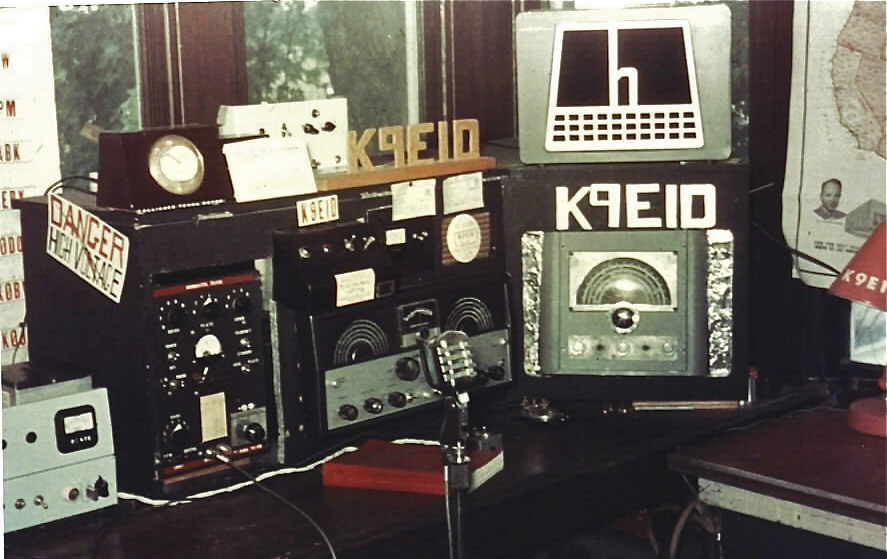
Bob at his station in 1959.

Bob's 128 elements on 2 meters in 1960.

Bob's station in 1961.

The current station consists of many pieces of equipment that I have had throughout my wonderful life and career in Amateur Radio. All working and on the air daily from the original 1956 Harvey Wells, the 20A I built in 1958, Central Electronics 600L (no tune 500W linear from 1956), the HT 37 I bought in 1962 and my most treasured Mosley CM -1 reciever that was recently signed by it's designer, John Clemens. Much of my electronic knowledge was learned from building and operating this great old gear. I continue to say those early days of building, designing circuitry was my college education. Love Amateur Radio!
The new gear console is actually my station lab where I am able to devlope and test new designs of microphones and audio equipment using the latest transceiver technologies. I designed the console for the various pieces of equipment as well as a small pull out work bench that I can work on and solder small projects and yes, those are analog VCR and cassette decks along with a Mini Disc recorder. Still love the Analog stuff! All of the Les Paul guitar switches control the 35 Ameritron relays selecting the various transcievers, phased dipoles and VHF antennas. The old lever type switches are much more user friendly that the rotary knobs. The 8 channel Yamaha mixer is for Receive only. Receive audio from each transceiver is fed to the mixer where I can tailor the equalizaiton of each, feed a common single headphone and then fed to the 35 watt, low distortion speakers of a pair of JBL Control 2P. The small mixer, computer and microphone in the lower right corner is for the HAM Nation broadcasts. John Clemens, W0BD designer of the Mosley CM-1 receiver signs one of my prize pieces of equipment -- my 1962 CM-1 still working beautifully. Sad news, but John became SK this past Septmeber 2018. He is sadly missed but his great design of the CM-1 lives on.
Mosley CM -1 reciever being signed by its designer John Clemens!

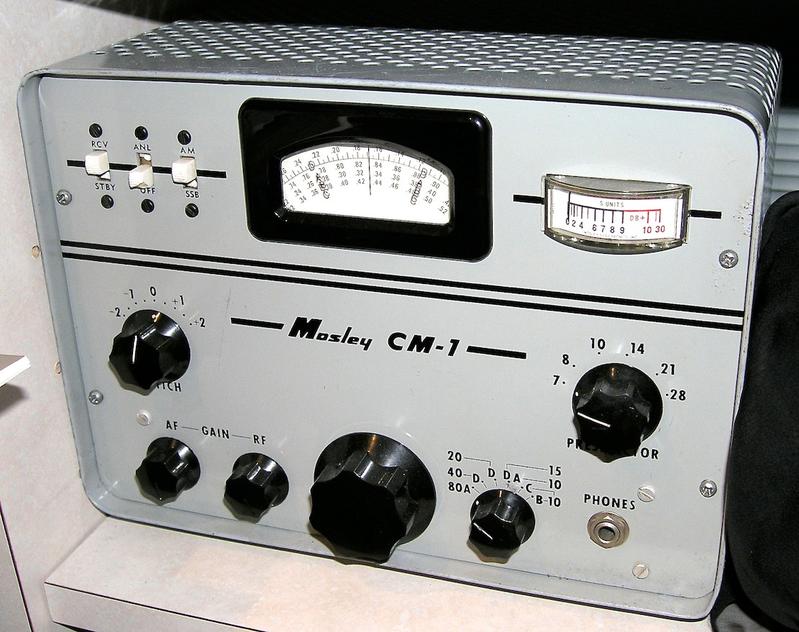
The latest piece of history is a 1962 EICO 720 60 watt CW transmitter with the EICO 730 modulator and 722 VFO. I coupled this with another of the Mosley CM-1 receivers. In the 1960's Eico was a major supplier of hi-fi amplifier kits using the Ultra Linear Williamason feedback circuitry producing very low distortion which reins supreme even today. Eico took one of their hi-fi amplifiers using pair of Mullard EL34 tubes, replaced the output transformer with a modulation transformer that connected in series with the B+ supply of the 6146 RF final with the result becoming a very high quality AM signal. I installed two 4PDT relays and the EICO now has PTT operated by one of our footswitches. Using one of our Heil PR series large diaphram dynamic microphones into a Presonus Studio Channel, the AM audio is excellent from this 1959 Novice CW transmitter that drives a Collins 30L1 to around 250 watts. I really enjoy operating AM with this great EICO station. Look for me on the low end of 75 meters 3710 - 3730 and in one of the AM calling frequencies. 3885, 7290, 14268 and 29.00.
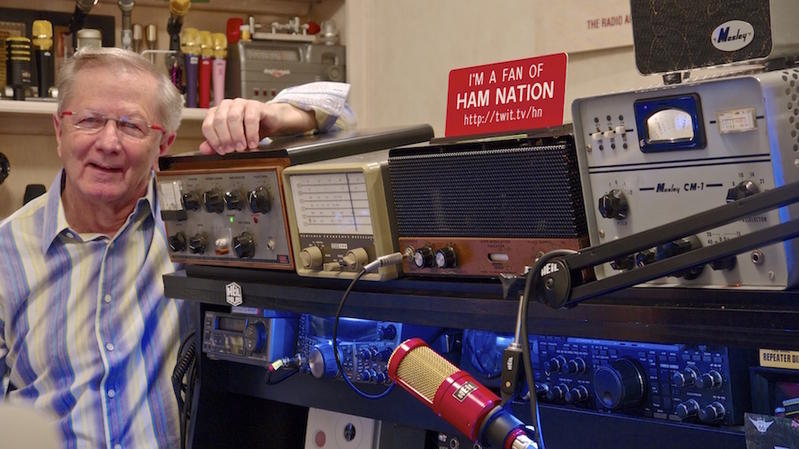

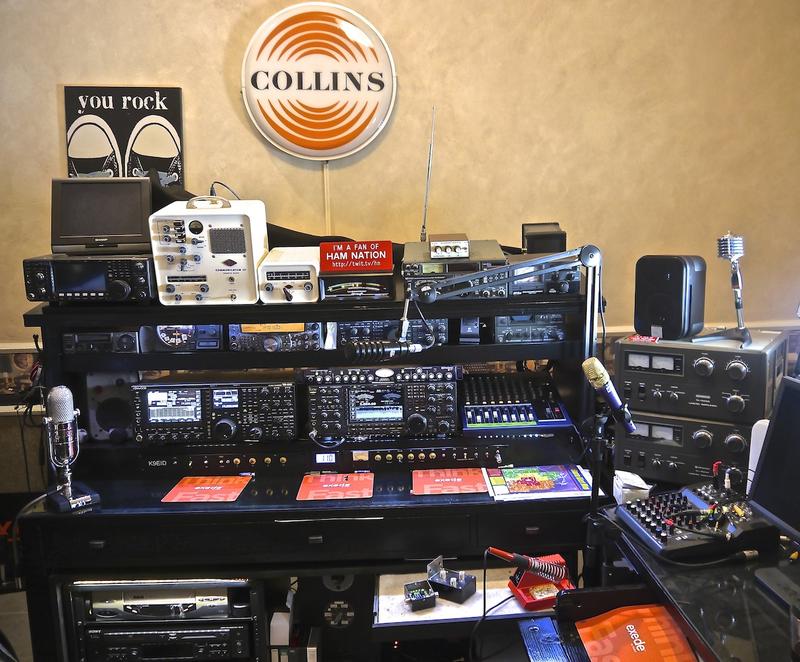
PARAMETRIC RECEIVE AUDIO SYSTEM. the PRAS
After well over two years of dreaming, experimentinig and finally designing, the PRAS is in production. No other product like this has ever been built for Amateur Radio and is badly needed. The manufacturers do not furnish the specifications of their receivers. WHY ? -Most of the receivers, $15K to $500 have terrible receive audio amplifiers of 1 watt with over 10% IMD driving a low quality 3" speaker. We really CAN do better, and I did. The PRAS is a complete receive audio system, by passing all of the on board audio. The equalization filter is parametric. You can select that all important mid range EQ filter from 400 Hz to 4kHz and bring the speech articulation out of the mud. The speaker exhibits 25 watts at .1% I.M.D. This approaches hi-fi specifications. The PRAS answers prayers for those with declining hearing losses. Speech articualtion around 2. 5kHz is phenominal. With the two seperate headphone amplifiers, you can have full control of the left headphone or the right headphone. Also perfect for the operator and logger. Check it out at the Amateur Radio site. www.heilsound.com
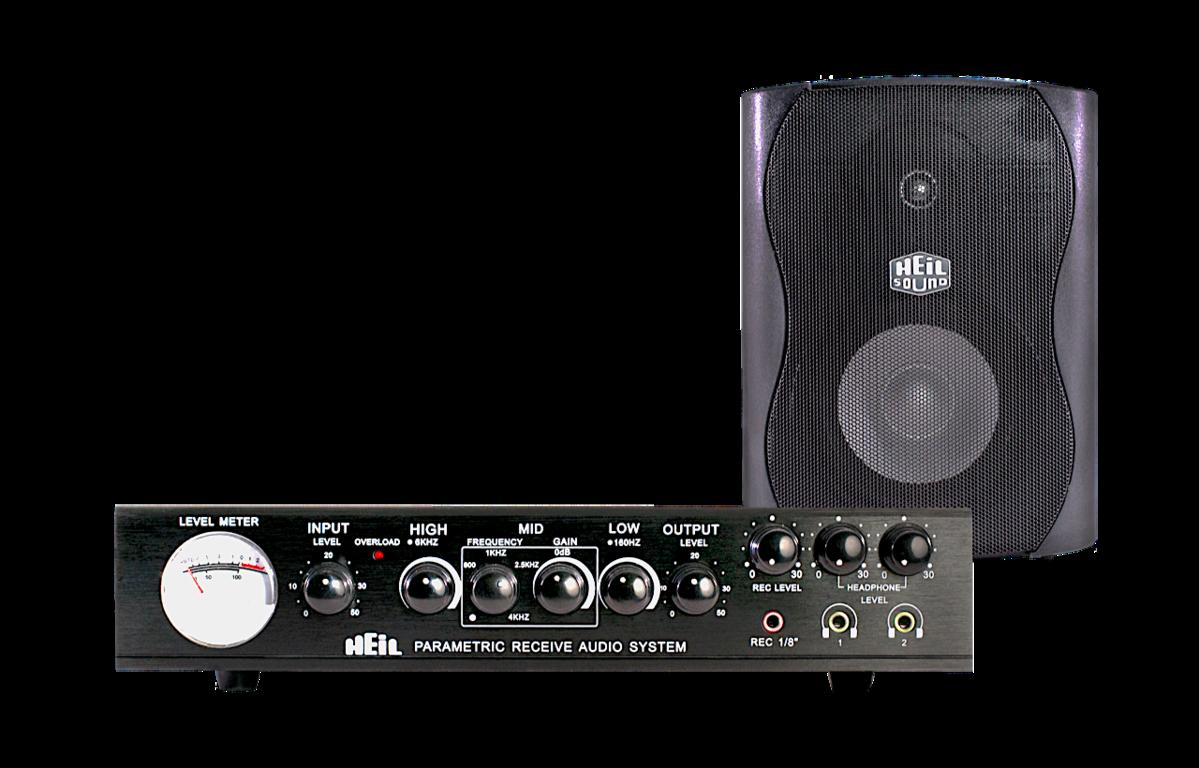
During my beginning days of Amateur Radio I began a career playing the Wurlitzer Theatre organ at the Fox Theatre in St. Louis as the protege of Stan Kann who not only taught me how to play but taught me how to 'listen' - mentally dissect what one hears -by tuning and voicing the thousands of pipes in that Magnificent Fox organ. I became the substitute organist for Stan at the age of 15 and continue to play these magnificent theatre organs. Little did I realize that learning to listen would be so very important in my later years as I began designing and buidling large concert sound systems for some of the world's leading groups starting with WB6ACU (Joe Walsh) and the James Gang. Those ham radio friends changed the world of Rock n Roll sound stages. The Grateful Dead, the Who, Z.Z.Top, Humble Pie, J.Geils, Peter Frampton, were just a few of the scores of groups that we blazed the concert trail with our large mega KW sound systems. In 2006, the Rock and Roll Hall of Fame in Cleveland, Ohio opened a display room with many peices from those early touring days that scored the way for entertainment concert systems used today. Heil Sound is the only manufacturer in the Rock Hall and it should be noted that all of my ability to design and build these ground breaking systems was learned - and I continue to learn from my Amateur Radio background.
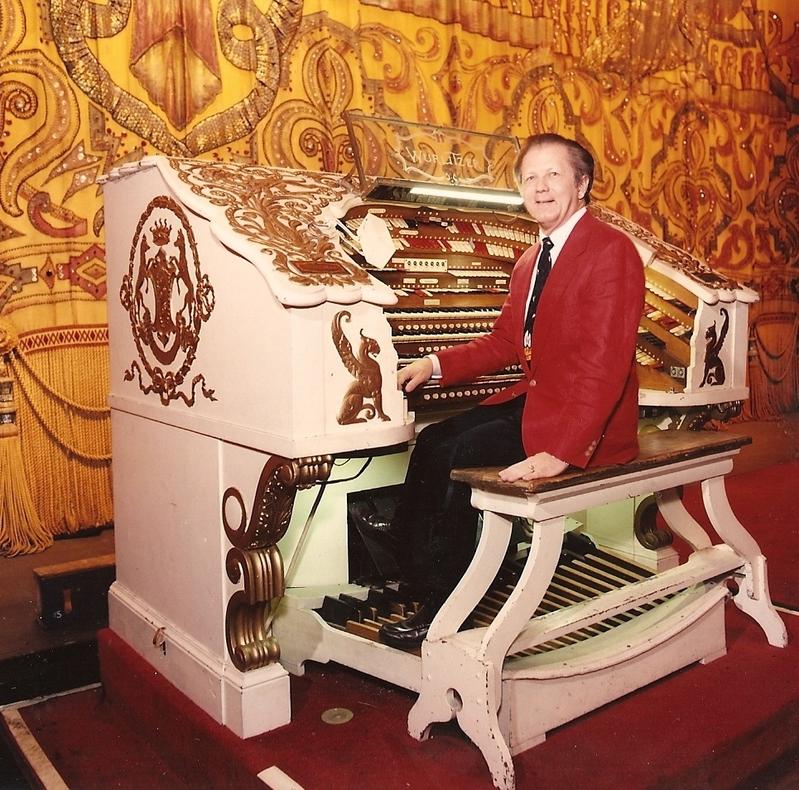
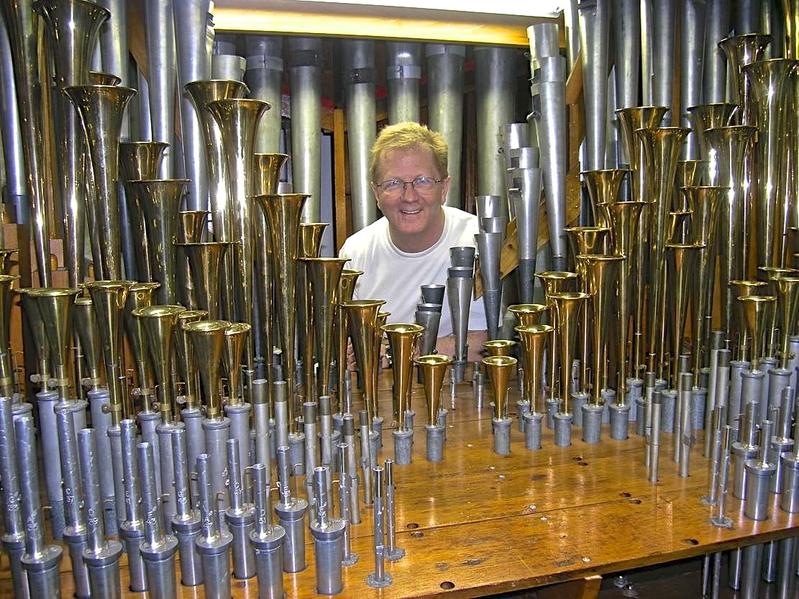

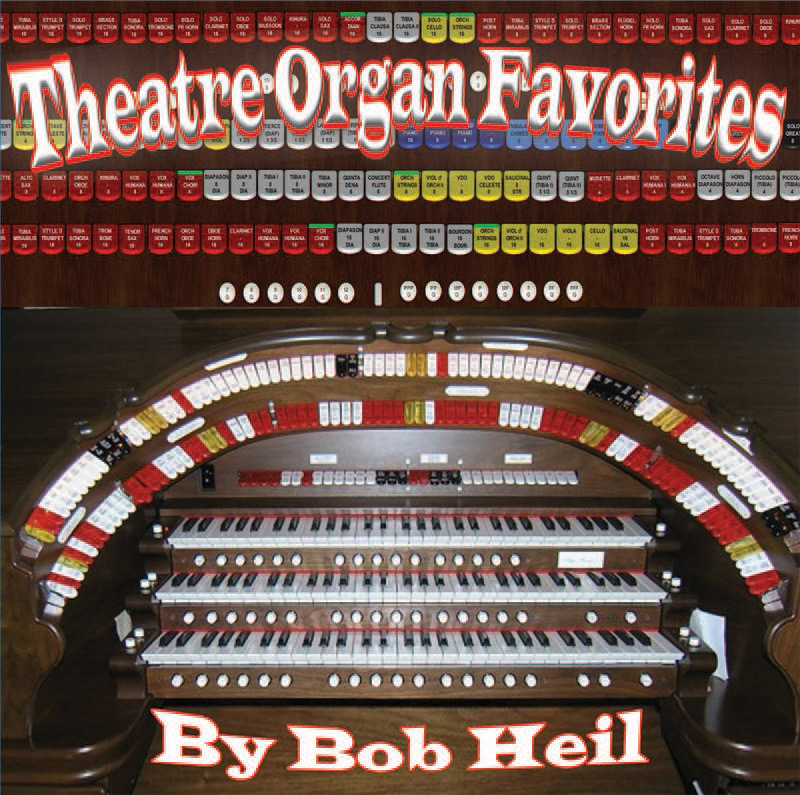

In 1980, I began paying more attention to the new breed of Amateur Radio equipment. The imports were taking place of the old line tube gear I was brought up with and discovered their 'matching' microphones were not up to the standard of years gone by, so I entered the market with our new technology of tailored response microphones that improved speech articulation. In 2008, Joe WB6ACU asked me to build him a better performance microphone. Once again these two Amateur Radio fanatics put their ears together resulting in Heil Sound bringing new technology to the entertainment stages. Because of Amateur Radio and learning to listen from the years of voicing and tuning theatre pipe organs, I am able to design and produce new technology of microphones and headsets for my beloved Amateur Radio industry. The last decade has been spent designing and building high performance dynamic microphones for scores of leading concert and recording artists. Needless to say - I Love Amateur Radio!
THE HEIL SOUND DISPLAY AT THE ROCK n ROLL HALL of FAME
In 2006, some of the historic products Heil Sound built for major arena tours of the late 60's and 70's were put on display at the Cleveland Rock and Roll Hall of Fame museum - the only manufacturer in the Rock Hall. I learned how to design and build special equipment from what I learned from my early days of Amateur Radio. It is a great honor and very humbling to have this display open in the Rock Hall museum, located right beside the Les Paul room and around the corner from the historic Sun Studio.
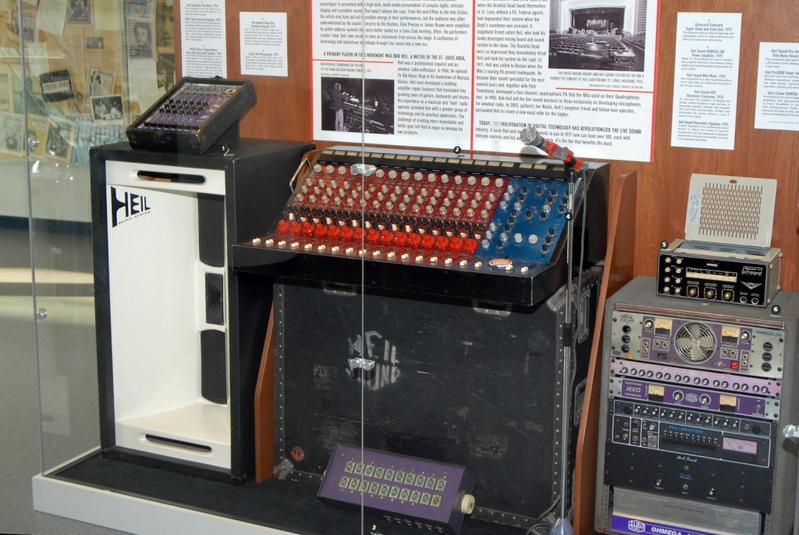
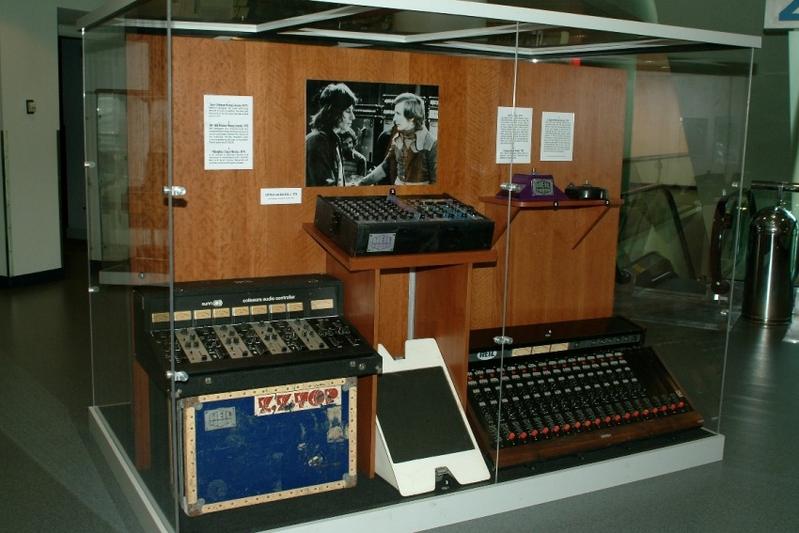
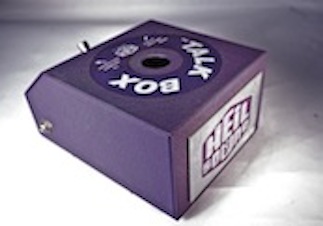
Heil Sound display in Cleveland's Rock and Roll Hall of Fame Museum features many specialty products including The Heil Talk Box built for Joe Walsh, Peter Frampton and many other artists, the first quad mixer and one of the rear channel arena speakers built for the WHO's Quadraphenia tours, one of Roger Daltrey's microphones (a model 566), the first modular mixer, modular power amps, modular EQ, the Echo cord tape delay Heil used for Pete Townshend's guitar effects, the 15 channel mixer used for the Grateful Dead and many other products designed and built by Heil Sound that performed some very historic tours and concerts - late 60's through 1980.
Here's one that didn't get busted. I would build 24 guitars for Pete each tour leg. He wanted better tuners, different bridge, etc. They were all destroyed by the end of the tour. When this one 'escaped', Pete handed it to me on one of the last nights. It now resides in the Rock Hall.

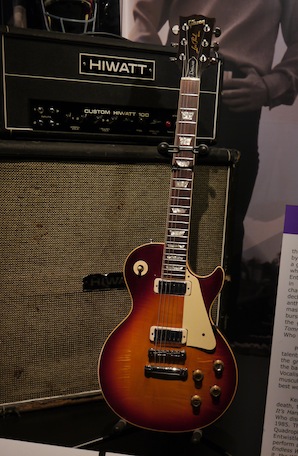

Phased array of the I.A.C. coaxial dipole antennas. (Check their web site), two at 64' high and 64' apart. Two on 40 meters at 33' high and 33' apart. Put HAM Nation into Google and access program #63 and # 65 to see how they were built and experience the results. Getting between 15 and 20 dB front to back. Here are the details of the easy construction.
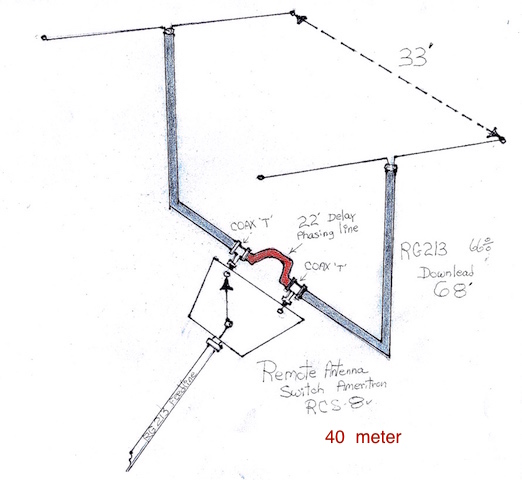
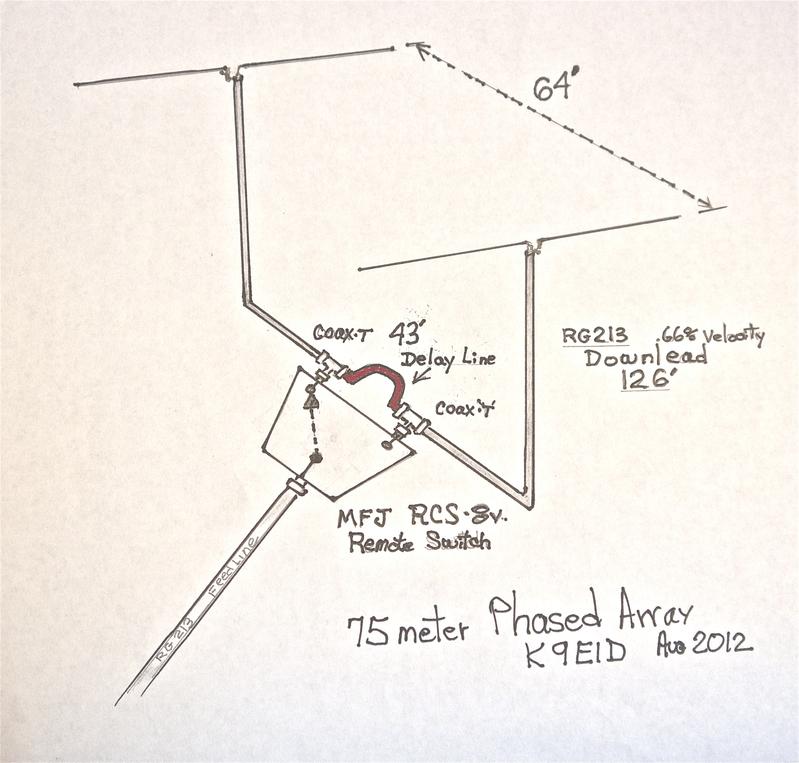
Force 12 C3SS at 55', M2 on 6 meters - Cushcraft on two meters at 65' and the the 75 and 40 meter Phased array using MIT designed coaxial dipoles from I.A.C. Antennas.
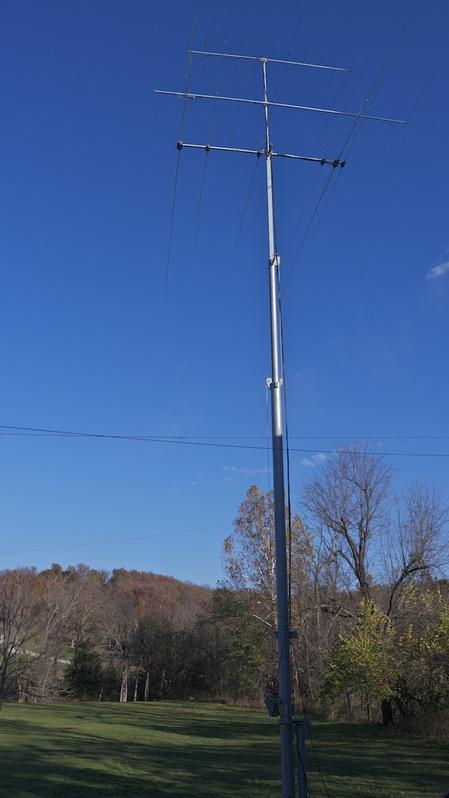
MUSICIAN'S FRIEND PODCAST
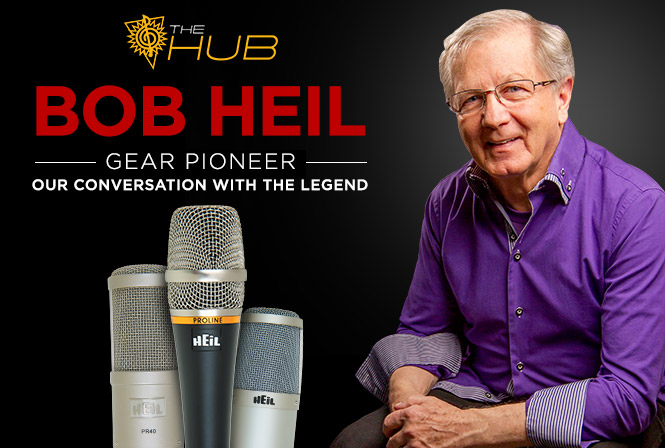
January 2018 QST Cover with Bob's Pine Board Project!
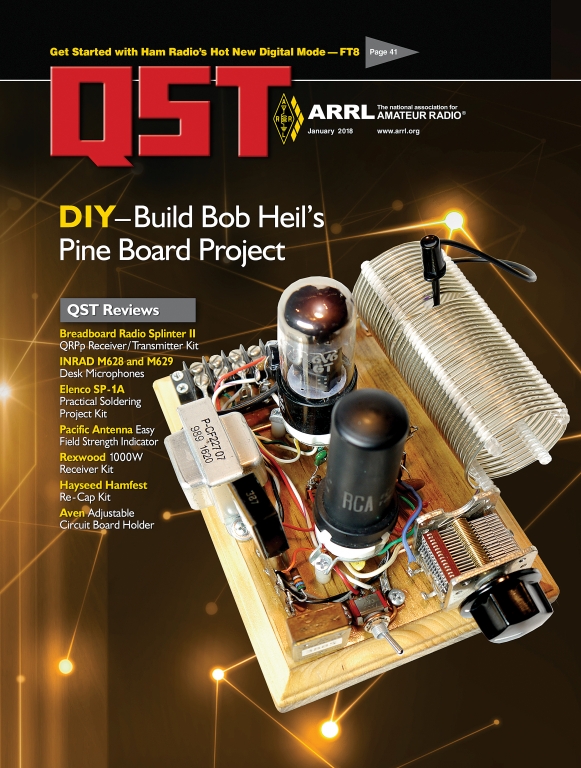
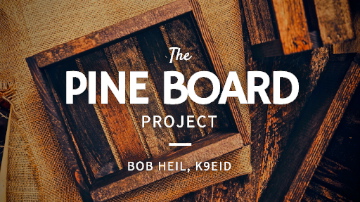
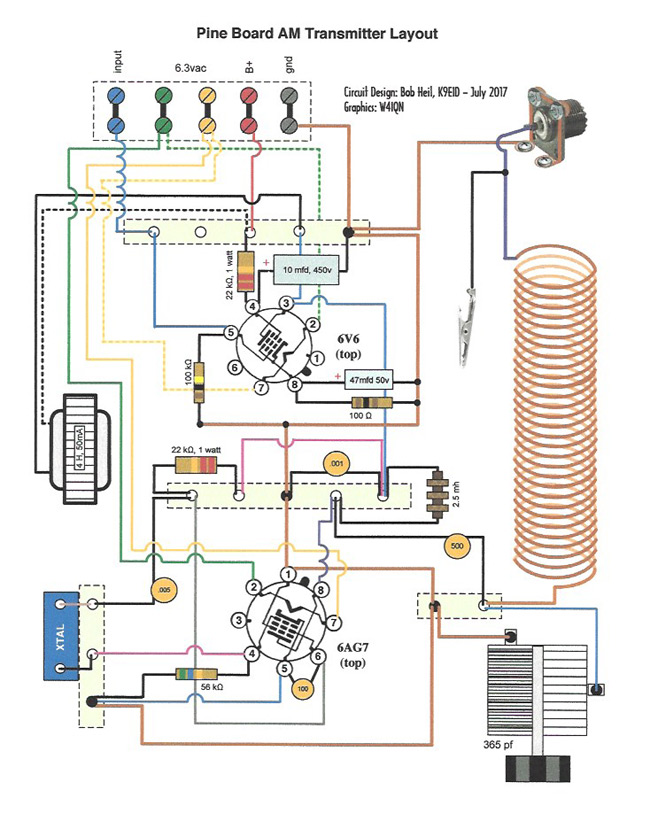
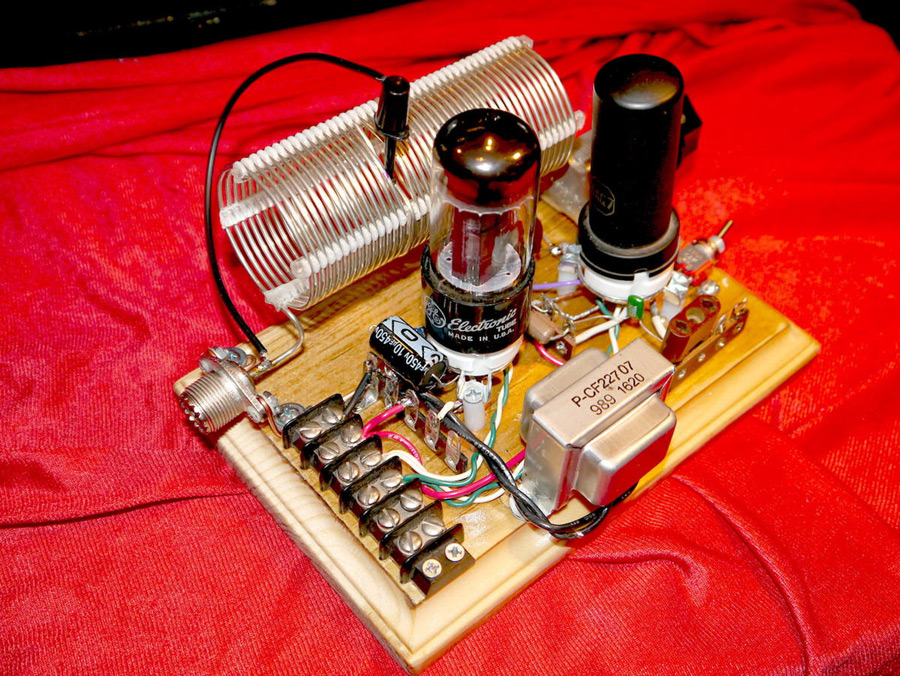
Follow us each Wednesday night on HAM NATION as we are builidng an AM transmitter using tubes on pine board, the way we used to do it. So much fun. Visit www.heilsound.com Down at the bottom of the Amateur Radio pages we have posted all of the weekly video clips, great diagrams, schematics and parts lists from the project. Come join us.

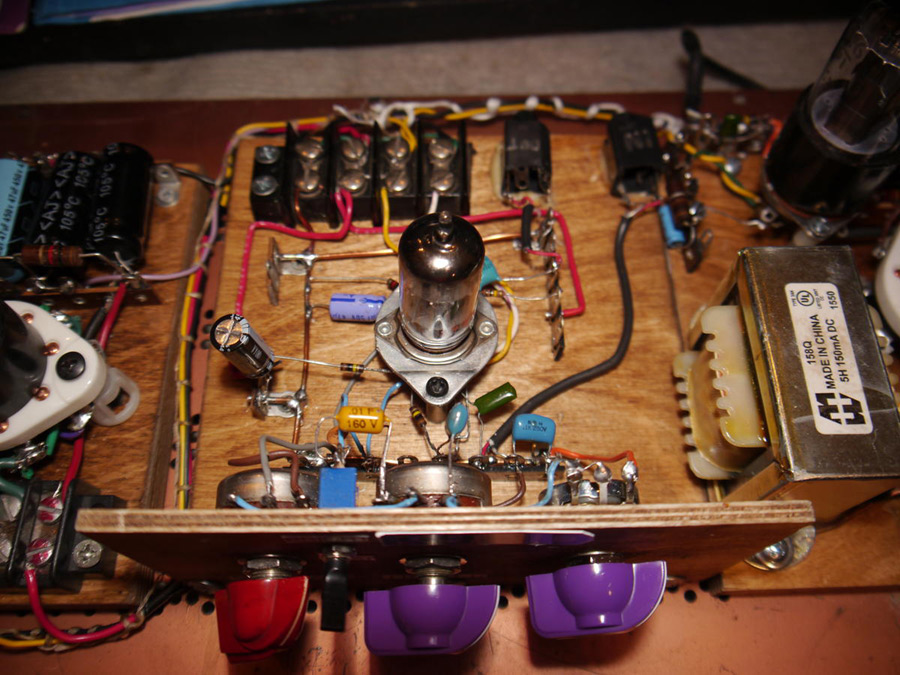
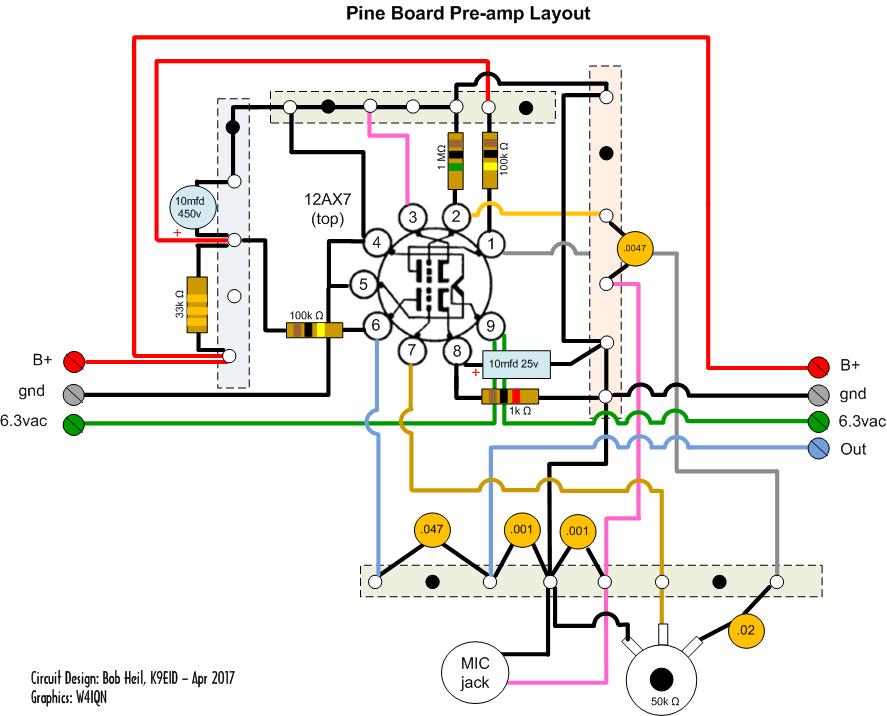
1956 T Bird with 1956 KWM-1
THE LATEST ADDITION: MARS THUNDERBIRD MT 75 transmitter. An extremely rare mobile transmitter. Built in JAPAN around 1955, this cute little transmitter runs a whopping 5 watts, plate modulated AM. We could get by with this low power mobile signal in those days when the noise floor was much lower and the bands were open- wide open each day. The receiver would have been a Gonset converter mounted to the steering column and connected to the AM radio using that as the i.f. and audio. I was blessed to have received this as my Christmas present this year (2018) from my 'Harvey Wells' buddy, Wayne WA4FTY. (check his QRZ pages!!). I am not using it mobile but you can find me on 3880 or 3885 with the cutest little transmitter - ever.


Bob made the cover of CQ Magazine with his mobile setup!
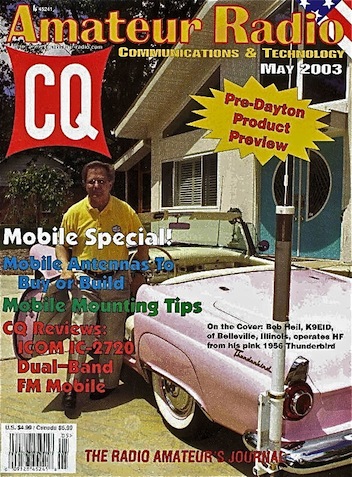
So very honored and humbled to receive an Honarary Doctorate of Music and Technology from the University of Missouri on December 14, 2014.
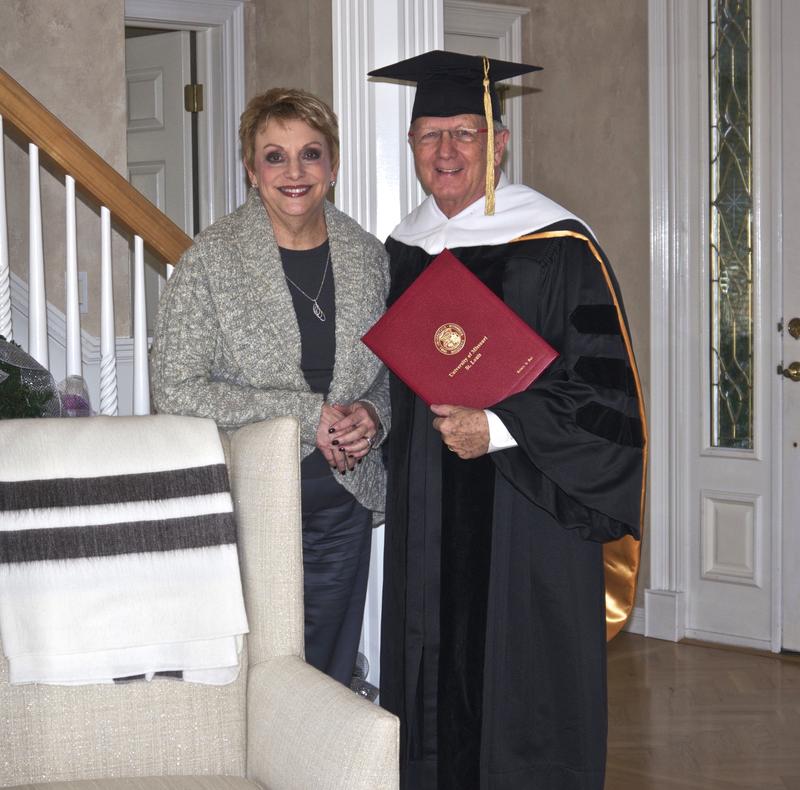
| Page 2 |
Tribute courtesy of K8CX, W3UR,
K9JF, KB8NW
Tower photo by N0IRS
Organ MOV File and pic courtesy of K3LA
Dayton Photos courtesy of K8CX
3 Photos on Page 2 courtesy of N6TV
This site is
copyright © by K8CX of Paradox Design Group (PDG).
All Rights Reserved. All art, photos, and html is property of
PDG.